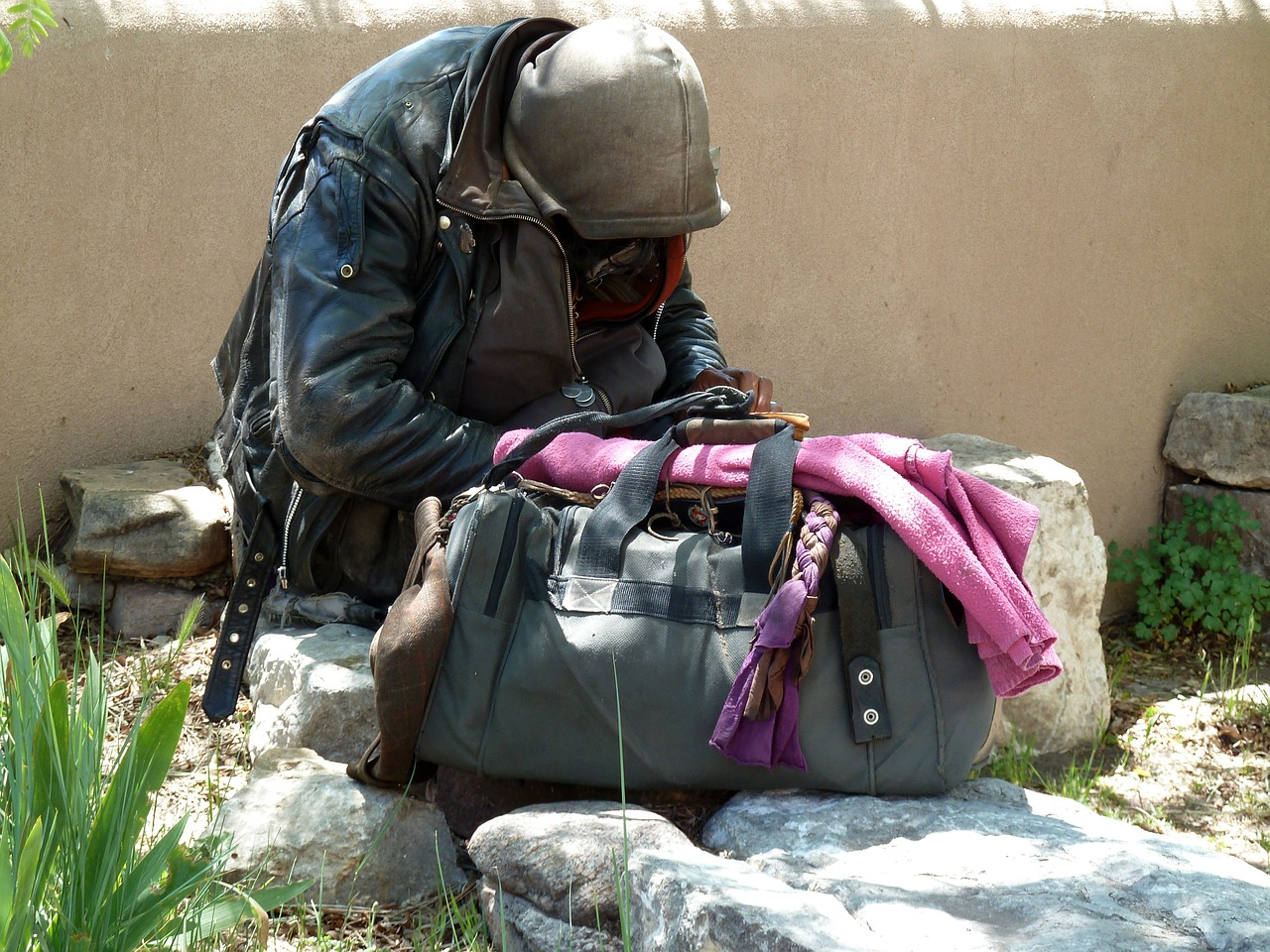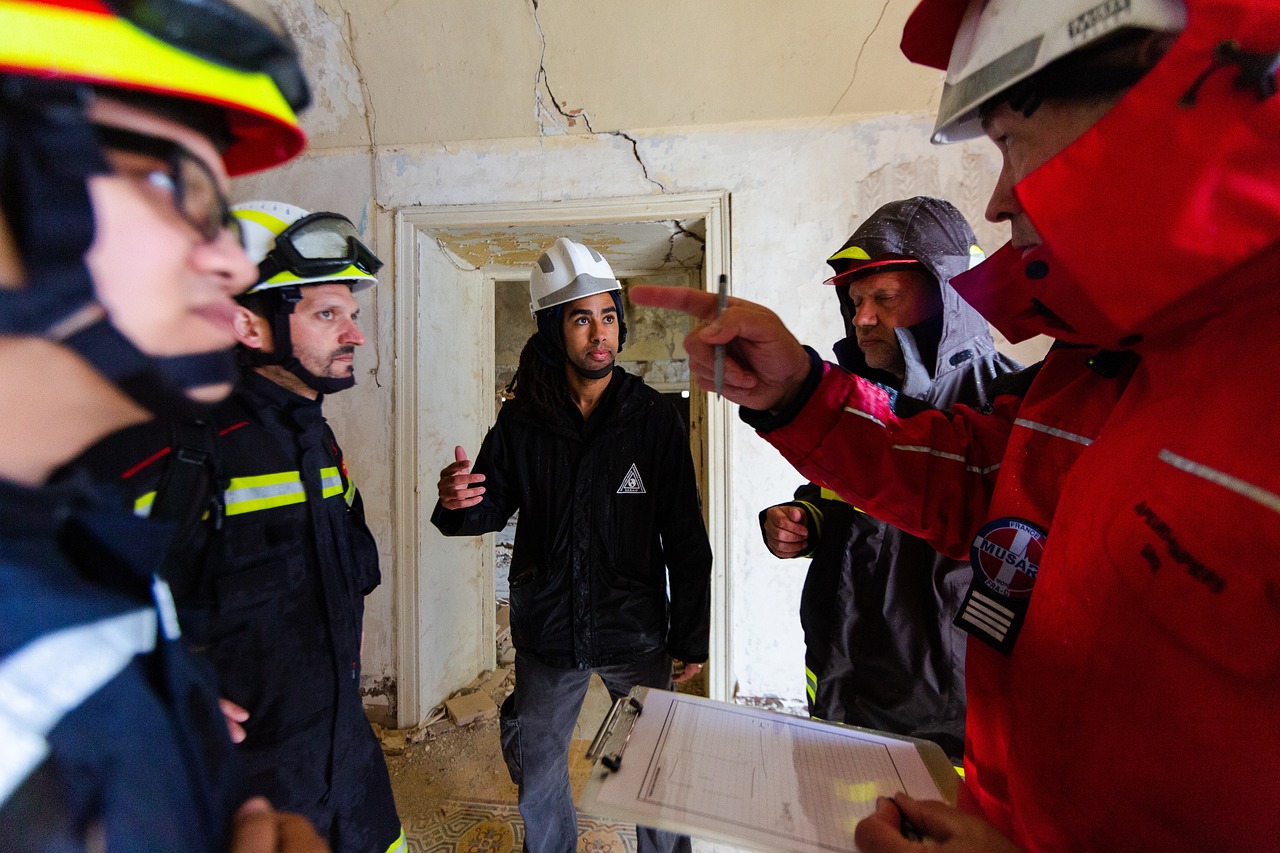The Impact of Disasters on the Homeless
Disasters, whether they are natural calamities like hurricanes or man-made tragedies such as industrial accidents, can have devastating effects on entire communities. However, one group that often bears the brunt of these disasters is the homeless population. The challenges faced by individuals without stable housing are compounded during these crises, leading to a cycle of vulnerability that is difficult to escape. In this article, we will explore how disasters disproportionately affect homeless individuals, examining the unique challenges they encounter before, during, and after such events. We will also discuss potential solutions and support systems that can help mitigate these impacts.
Homeless individuals often face unique vulnerabilities during disasters. When a disaster strikes, their lack of permanent shelter leaves them exposed to the elements, increasing their risk of injury or illness. Moreover, many homeless individuals may not have access to timely information about impending disasters, making it difficult for them to prepare or evacuate. The barriers they encounter in seeking safety and assistance can include:
- Limited Mobility: Many homeless individuals may not have transportation to reach evacuation centers.
- Health Issues: Chronic health problems can hinder their ability to respond quickly to disaster warnings.
- Lack of Identification: Without proper ID, accessing emergency shelters and services becomes nearly impossible.
These factors contribute to a heightened risk during disasters, making it crucial to understand the specific needs of homeless populations in crisis situations.
Different types of disasters—natural and man-made—have varying impacts on the homeless. Each type of disaster exacerbates their already precarious situation, leading to unique challenges. Understanding these distinctions is essential for developing effective response strategies.
Natural disasters, such as hurricanes, earthquakes, and floods, create immediate dangers and long-term challenges for homeless populations. For example, during a hurricane, the strong winds and flooding can destroy makeshift shelters, leaving individuals with nowhere to turn. The aftermath often includes a lack of access to clean water, food, and medical care, which are critical for survival. The unique risks faced by the homeless during such events can include:
- Exposure to Elements: Without shelter, individuals are directly exposed to harsh weather conditions.
- Increased Vulnerability: The chaos of a disaster can lead to exploitation and violence against homeless individuals.
- Isolation: Many homeless individuals may not have a support network to rely on during a crisis.
Evacuating homeless individuals during natural disasters poses significant challenges. Logistical issues, such as the lack of transportation and the overcrowding of shelters, can leave many without a safe place to go. Additionally, systemic barriers, such as the stigma surrounding homelessness, can prevent effective communication about available resources. This creates a dire situation where many individuals are left behind, unable to seek safety.
During natural disasters, resources become scarce. The competition for limited aid can lead to further marginalization of homeless individuals. As organizations and government agencies scramble to provide assistance, those without stable housing often find themselves at the end of the line. This scarcity can manifest in various ways, including:
- Limited Access to Shelters: Many shelters prioritize families or individuals with housing, leaving the homeless with fewer options.
- Food Shortages: Emergency food supplies may not reach homeless populations in a timely manner.
- Healthcare Access: Medical services may become overwhelmed, making it difficult for homeless individuals to receive necessary care.
Man-made disasters, such as industrial accidents or terrorism, also severely impact homeless populations. These events often create chaotic environments where safety is compromised. The specific vulnerabilities faced by the homeless in these situations include heightened risks of injury and exposure to hazardous materials. Additionally, the psychological impact of such disasters can lead to long-term trauma, making recovery even more challenging.
Effective support systems are crucial in mitigating the impact of disasters on homeless individuals. Various programs and initiatives aim to provide aid during and after disasters, ensuring that the needs of this vulnerable population are addressed.
Government initiatives play a vital role in disaster response for the homeless. Policies and programs designed to assist vulnerable populations during crises are essential for effective disaster management. These initiatives can include emergency shelters specifically for homeless individuals, as well as outreach programs that ensure they receive timely information and resources.
Community organizations and non-profits often fill gaps in disaster response. They provide critical support through food banks, temporary housing, and medical services. Successful collaborations between these organizations and local governments can lead to innovative solutions that better serve homeless populations during disasters.
Q1: How can I help homeless individuals during a disaster?
A1: You can donate to local shelters, volunteer your time, or provide essential supplies like food and water during emergencies.
Q2: What should homeless individuals do to prepare for a disaster?
A2: They should stay informed about local emergency services, have a plan for where to go during a disaster, and keep essential documents in a safe place.
Q3: Are there specific shelters for homeless people during disasters?
A3: Many communities set up emergency shelters specifically for homeless individuals during disasters, but availability can vary by location.

Understanding Homelessness in Disasters
When disaster strikes, the world seems to turn upside down, and for those who are homeless, the chaos can be even more devastating. Homeless individuals often find themselves in a precarious situation, facing unique vulnerabilities that can lead to dire consequences. Think about it: when a hurricane approaches or a wildfire rages, where do those without a roof over their heads go? The answer is not simple, and it highlights the barriers they encounter in seeking safety and assistance.
One of the primary reasons homeless individuals are disproportionately affected by disasters is their lack of stable housing. Without a place to call home, they are often left to navigate the streets or makeshift shelters, which may not provide adequate protection against the elements. During a natural disaster, these transient locations can become death traps, exposing individuals to extreme weather conditions that others can escape from.
Moreover, many homeless individuals face significant barriers when trying to access emergency services. These barriers can include:
- Limited Mobility: Many homeless individuals may not have access to transportation, making it difficult to evacuate to safer areas.
- Health Issues: Chronic health conditions can complicate their ability to respond quickly during emergencies.
- Fear of Authority: Past experiences with law enforcement or social services may lead to distrust, preventing them from seeking help.
In addition to these challenges, the psychological toll of homelessness exacerbates the impact of disasters. The stress and trauma associated with living without a stable home can lead to heightened anxiety during crises. For many, the uncertainty of where to go or what to do can be overwhelming, leading to paralysis rather than proactive measures. Imagine trying to think clearly when your very survival is at stake; it’s a daunting scenario that often leads to poor decision-making.
Furthermore, the social stigma surrounding homelessness can result in isolation during disasters. While many communities come together to support one another during tough times, homeless individuals may feel excluded from these networks. They might not know where to turn for help or may be overlooked by those distributing aid. This social exclusion can compound their vulnerabilities, leaving them even more susceptible to the negative impacts of disasters.
As we delve deeper into the types of disasters and their effects on the homeless, it becomes clear that understanding these unique challenges is essential for developing effective solutions. How can we ensure that vulnerable populations are not left behind when disaster strikes? This question is crucial as we explore the systemic changes needed to protect those who are most at risk.

Types of Disasters and Their Effects
When we think about disasters, our minds often jump to dramatic images of hurricanes tearing through towns or wildfires engulfing entire communities. However, the impact of these disasters is not uniform; it varies significantly based on the population affected. For the homeless, both natural and man-made disasters create a web of challenges that can be life-threatening. These individuals, already living on the fringes of society, often find themselves in perilous situations during such events. Understanding how different types of disasters affect the homeless is crucial in developing effective response strategies.
Natural disasters, such as hurricanes, floods, or earthquakes, typically lead to immediate dangers like injury or loss of life. But the aftermath can be just as devastating. For instance, when a hurricane hits, it’s not just about finding shelter; it’s about navigating a landscape that has changed overnight. Roads may be blocked, shelters may be full, and essential services like food and medical care can become scarce. The homeless often lack the resources to evacuate or even access information about safe zones. This can lead to tragic outcomes, as they may be caught in the chaos without a clear plan or support.
On the other hand, man-made disasters, such as industrial accidents or acts of terrorism, present their own set of challenges. For instance, consider a chemical spill in an urban area. The immediate danger is the toxic exposure, but the long-term effects can ripple through the community. Homeless individuals may not only be at risk from the initial incident but also from the subsequent fallout, such as contamination of water supplies or loss of local resources. The psychological impact cannot be overlooked either; the trauma of such events can exacerbate mental health issues that many homeless individuals already face.
To illustrate the differences in how various disasters affect the homeless, we can summarize some key points in the table below:
| Type of Disaster | Immediate Effects | Long-term Effects |
|---|---|---|
| Natural Disasters | Injury, displacement, loss of shelter | Resource scarcity, mental health issues, increased vulnerability |
| Man-Made Disasters | Toxic exposure, immediate danger | Health complications, loss of community resources, trauma |
Furthermore, the effects of these disasters are not just physical; they can also lead to a compounded sense of isolation. Many homeless individuals lack the social support networks that others might rely on during crises. This isolation can make it even harder for them to access the help they need, whether that’s finding a safe place to stay or receiving medical care. The emotional toll of feeling abandoned during a disaster can be as damaging as the physical threats they face.
In conclusion, the types of disasters we face—be they natural or man-made—bring about a multitude of challenges for homeless populations. Understanding these challenges is the first step in creating effective support systems that can help mitigate the devastating effects of disasters on some of society's most vulnerable members.

Natural Disasters
Natural disasters, such as hurricanes, earthquakes, floods, and wildfires, create not only immediate dangers but also long-lasting challenges for homeless populations. Imagine being caught in a storm with no roof over your head, no place to seek refuge, and no resources to ensure your survival. This is the harsh reality for many homeless individuals who find themselves in the path of nature's fury. The precariousness of their situation is exacerbated by several factors, including lack of access to information, transportation, and safe shelter.
During a natural disaster, the homeless face unique risks that can lead to devastating consequences. For example, when a hurricane approaches, evacuation orders are issued, but many homeless individuals lack the means to comply. They might not have transportation to reach safer areas, or they may not know where to go. Even if they are able to evacuate, shelters may not accept pets, or they may be overcrowded, leaving many without a safe place to stay. This creates a cycle of vulnerability where the homeless are left to fend for themselves in life-threatening situations.
Moreover, the aftermath of a natural disaster is equally challenging. The destruction of infrastructure can lead to a scarcity of essential resources such as food, water, and medical supplies. Homeless individuals often find themselves competing with others for limited aid, which can lead to feelings of despair and helplessness. It's important to recognize that during these crises, the competition for resources intensifies. For instance:
- Food banks may run out of supplies quickly, leaving the most vulnerable without access to meals.
- Emergency shelters may be overwhelmed, forcing people to sleep outside in unsafe conditions.
- Healthcare services may be disrupted, making it difficult for homeless individuals to receive necessary medical attention.
Additionally, the psychological impact of natural disasters on homeless individuals cannot be overlooked. The trauma of experiencing such catastrophic events can lead to long-term mental health issues, including anxiety, depression, and post-traumatic stress disorder (PTSD). Without proper support systems in place, these individuals may struggle to recover, both physically and emotionally.
In summary, natural disasters present a multitude of challenges for homeless populations. From evacuation hurdles to resource scarcity, the effects are profound and far-reaching. As we consider how to support these vulnerable individuals, it becomes evident that addressing their unique needs before, during, and after disasters is critical. The question remains: how can we, as a society, ensure that no one is left behind when disaster strikes?

Evacuation Challenges
When disaster strikes, the urgency to evacuate becomes paramount, but for homeless individuals, this process is fraught with challenges that can often seem insurmountable. Imagine being caught in a storm with no roof over your head, no access to reliable transportation, and no one to turn to for help. This is the grim reality for many in the homeless community. One of the primary issues is the lack of a stable support network. While many people can rely on friends or family to provide shelter during emergencies, homeless individuals often lack these connections, leaving them vulnerable and isolated.
Moreover, the logistics of evacuation can be incredibly complex. Emergency services are typically focused on the general population, and the unique needs of homeless individuals can easily be overlooked. For instance, shelters may be at capacity or not equipped to accommodate those with specific needs, such as mental health issues or disabilities. This creates a scenario where, even if evacuation is possible, many homeless individuals may not have a safe place to go, resulting in them choosing to stay in dangerous conditions rather than risk being turned away from shelters.
Another significant challenge is the stigma associated with homelessness. During evacuations, there can be a perception that homeless individuals are less deserving of assistance. This stigma can lead to exclusion from emergency services or resources. It's crucial to recognize that, in moments of crisis, everyone deserves help, and addressing these biases can improve the effectiveness of evacuation efforts.
Additionally, the lack of transportation options is a critical barrier. Many homeless individuals do not own vehicles, making it difficult to reach evacuation sites or safer areas. Public transportation systems may also be disrupted during disasters, further complicating escape routes. It’s essential for local governments to develop inclusive evacuation plans that cater to the needs of the homeless population.
To illustrate these challenges, consider the following table that outlines some of the key barriers faced by homeless individuals during evacuation:
| Challenge | Description |
|---|---|
| Lack of Transportation | Many homeless individuals do not have access to vehicles, making it difficult to evacuate quickly. |
| Limited Shelter Availability | Shelters may be full or unable to accommodate those with specific needs, leaving individuals without safe options. |
| Stigma and Discrimination | Negative perceptions can lead to exclusion from emergency services and resources. |
| Isolation | Many homeless individuals lack a support network, making it harder to find assistance during emergencies. |
Addressing these evacuation challenges requires a multifaceted approach. Community organizations, local governments, and disaster response teams must work together to ensure that homeless individuals are included in emergency planning. This might involve creating dedicated outreach programs that provide information and resources specifically tailored to the homeless population, ensuring they know where to go and how to get there when disaster strikes. By recognizing and addressing these challenges, we can help ensure that no one is left behind in times of crisis.
- What should be done to improve evacuation plans for the homeless?
Evacuation plans should include dedicated resources for the homeless, such as transportation options, emergency shelters that can accommodate all needs, and outreach initiatives to ensure they are informed and supported during disasters.
- How can community organizations help during disasters?
Community organizations can provide essential services such as food, shelter, and medical care, and they can also facilitate communication between homeless individuals and emergency services.
- What role do local governments play in supporting the homeless during disasters?
Local governments are crucial in creating policies and programs that prioritize the needs of homeless populations, ensuring they are included in emergency response plans.

Resource Scarcity
When disaster strikes, the chaos that ensues often leads to a significant scarcity of resources. This scarcity is particularly devastating for homeless individuals, who are already living on the fringes of society. Imagine being in a crowded shelter where everyone is clamoring for the same limited supplies—food, water, blankets, and medical aid. The competition for these essentials can be fierce, and unfortunately, those without a permanent address often find themselves at the back of the line.
During natural disasters, such as hurricanes or floods, the demand for resources skyrockets. Emergency services are overwhelmed, and shelters quickly reach capacity. For homeless individuals, this can mean being left without a safe place to go, exacerbating their vulnerability. The lack of a stable living situation often means they have no access to information about available resources, which can be a lifeline during such crises. Without a permanent address, they may also struggle to receive aid or support from government programs that require identification or proof of residency.
Furthermore, the psychological toll of resource scarcity cannot be underestimated. The stress of survival in a disaster situation can lead to mental health issues, which can further complicate an already difficult situation. With limited access to mental health resources, homeless individuals may find it challenging to cope with the trauma of the disaster and the subsequent lack of support. It's a vicious cycle: the more they struggle to find basic necessities, the more their mental health deteriorates, making it even harder for them to seek help.
To illustrate the impact of resource scarcity on homeless populations during disasters, consider the following table:
| Resource | Impact of Scarcity |
|---|---|
| Food | Increased hunger and malnutrition, leading to health complications. |
| Water | Dehydration and increased vulnerability to illness. |
| Shelter | Exposure to the elements, increasing the risk of injury or death. |
| Medical Aid | Untreated injuries and chronic conditions worsening, leading to long-term health issues. |
In conclusion, resource scarcity during disasters poses a significant threat to homeless populations. The combination of overwhelming demand, lack of access to information, and psychological stress creates an environment where survival becomes a daily struggle. It is crucial for communities to recognize these challenges and work towards solutions that ensure that those most in need are not left behind in times of crisis.
- How do disasters specifically affect homeless individuals?
Disasters exacerbate existing vulnerabilities, making it harder for homeless individuals to access essential resources like food, water, and shelter. - What can be done to help homeless populations during disasters?
Effective communication, emergency shelters, and targeted resource distribution can significantly improve outcomes for homeless individuals during disasters. - Are there government programs in place to assist the homeless during disasters?
Yes, many governments have initiatives designed to provide aid to vulnerable populations during crises, though gaps often remain.

Man-Made Disasters
Man-made disasters, unlike their natural counterparts, stem from human actions and decisions, leading to catastrophic consequences that often catch communities off guard. These incidents can range from industrial accidents to acts of terrorism, and they pose unique challenges for homeless populations. Imagine waking up in a world where the ground beneath you shakes due to an explosion at a nearby factory, or the air becomes toxic because of a chemical spill. For those without a stable home, the risks multiply exponentially, leaving them vulnerable and exposed.
When a man-made disaster strikes, the immediate chaos can be overwhelming. Emergency services may struggle to respond effectively, and the homeless often find themselves at the bottom of the priority list. They lack the resources to evacuate quickly, and many may not even be aware of the impending danger. This lack of information can stem from several factors, including limited access to communication tools and a general mistrust of authorities. As a result, they are often left to fend for themselves in situations where timely assistance is critical.
Furthermore, the aftermath of a man-made disaster can be devastating for homeless individuals. Not only do they face the immediate threat of injury or death, but they also contend with long-term repercussions such as displacement, loss of personal belongings, and mental health challenges. The psychological toll can be significant, as many may experience trauma or anxiety from the events they have witnessed or endured. In addition, the cleanup and recovery phase can lead to further marginalization, as resources become scarce and competition for aid intensifies.
Consider the example of an industrial accident where hazardous materials are released into the environment. In such cases, homeless individuals may not only be at risk from the immediate explosion but also from the long-term health effects of exposure to toxic substances. They often lack access to medical care and may not have the means to seek help, compounding their vulnerabilities. The cycle of disaster and recovery can leave them trapped in a situation where they are continuously at risk, unable to escape the clutches of their circumstances.
To illustrate the impact of man-made disasters on homeless populations, we can look at some key factors:
| Factor | Impact on Homeless Individuals |
|---|---|
| Lack of Information | Inability to prepare for or evacuate from dangerous situations. |
| Resource Scarcity | Increased competition for limited aid and support services. |
| Health Risks | Long-term health issues due to exposure to hazardous conditions. |
| Psychological Trauma | Increased incidence of mental health issues such as PTSD and anxiety. |
In summary, man-made disasters create a complex web of challenges for homeless individuals, exacerbating their already precarious situation. As we consider the implications of these events, it's essential to recognize the urgent need for tailored support systems that address the unique vulnerabilities of this population. Only through comprehensive planning and community engagement can we hope to mitigate the devastating impact of such disasters on those who are most at risk.

Support Systems for the Homeless
Effective support systems are crucial in mitigating the impact of disasters on homeless individuals. These systems can mean the difference between life and death during catastrophic events. Imagine being caught in a storm without a roof over your head—how would you find safety? Unfortunately, many homeless individuals face this grim reality, and that’s where robust support systems come into play. Various organizations, both governmental and non-profit, are stepping up to provide essential services during and after disasters.
Government initiatives play a vital role in disaster response for the homeless. Policies and programs designed to assist vulnerable populations during crises are essential. For instance, emergency shelters are often established in response to natural disasters, providing a safe haven for those without homes. These shelters not only offer a roof but also access to food, medical care, and emotional support. However, the effectiveness of these initiatives can vary widely based on location and available resources. Some areas may have well-funded programs, while others struggle to meet even the basic needs of their homeless populations.
On the other hand, community organizations and non-profits often fill gaps in disaster response. They can be more agile than government programs, quickly mobilizing resources and volunteers to assist those in need. For example, during a recent hurricane, a local non-profit set up a mobile unit that provided hot meals, hygiene kits, and mental health support to homeless individuals who were often overlooked by larger aid organizations. These grassroots efforts are vital, as they often understand the unique challenges faced by the homeless community.
To give you a clearer picture, here’s a table showcasing some key support systems available for the homeless during disasters:
| Support System | Description | Examples |
|---|---|---|
| Government Shelters | Temporary housing provided during disasters. | Emergency evacuation centers, Red Cross shelters |
| Non-Profit Services | Community-driven efforts to provide immediate assistance. | Food banks, mobile health clinics |
| Outreach Programs | Teams that actively seek out homeless individuals in need. | Street outreach teams, crisis intervention services |
Moreover, collaboration among different organizations can amplify the impact of these support systems. When government agencies team up with local non-profits, the combined resources can lead to more comprehensive disaster response strategies. This synergy can ensure that homeless individuals receive timely assistance, from evacuation to long-term recovery efforts. For instance, a partnership between a city’s emergency management office and a local homeless shelter can streamline communication and resource allocation, ensuring that no one is left behind.
However, despite these efforts, challenges remain. Many homeless individuals are hesitant to seek help due to past negative experiences or a lack of trust in the systems designed to protect them. This reluctance can lead to a cycle of vulnerability during disasters. Therefore, building trust and ensuring that support systems are accessible and welcoming is crucial. Engaging with the homeless community to understand their needs and concerns can lead to more effective programs.
In conclusion, while the support systems for the homeless during disasters are improving, there is still much work to be done. Ensuring that these systems are robust, well-funded, and accessible can significantly mitigate the impact of disasters on this vulnerable population. After all, in times of crisis, a helping hand can make all the difference.
- What types of support are available for the homeless during disasters? Various support systems include government shelters, non-profit services, and outreach programs that provide food, medical care, and temporary housing.
- How can I help homeless individuals during a disaster? You can volunteer with local organizations, donate supplies, or advocate for policies that support homeless populations during crises.
- Are there specific programs for homeless individuals in my area? Yes, many local non-profits and government agencies have specific programs tailored to assist homeless individuals during disasters. Check your local resources for more information.

Government Initiatives
The role of in disaster response for homeless individuals cannot be overstated. These programs are designed to provide immediate assistance and long-term support, ensuring that vulnerable populations are not left to fend for themselves in the wake of calamities. Governments at various levels—federal, state, and local—have recognized the unique challenges faced by the homeless during disasters and have developed targeted strategies to address these issues.
One of the primary initiatives is the establishment of emergency shelters specifically aimed at accommodating homeless individuals during crises. These shelters are equipped with basic necessities such as food, water, and medical supplies. However, the effectiveness of these shelters often hinges on their accessibility and the speed at which they can be deployed. For instance, during hurricanes, local governments may partner with non-profits to create temporary housing solutions that cater to the homeless population.
In addition to emergency shelters, many governments have launched outreach programs that focus on connecting homeless individuals with resources before, during, and after disasters. These programs often include:
- Mobile assistance units that provide on-the-spot help.
- Case management services to help individuals navigate available resources.
- Health services to address immediate medical needs.
Furthermore, legislation plays a crucial role in shaping how governments respond to the needs of the homeless during disasters. For example, laws that mandate the inclusion of homeless individuals in disaster preparedness plans ensure that their specific needs are considered. This can include provisions for accessible transportation, communication strategies tailored to reach homeless populations, and partnerships with local shelters and organizations.
Despite these initiatives, there are still significant challenges that need to be addressed. For example, many homeless individuals may be hesitant to seek help due to past experiences with shelters or fear of stigma. To combat this, some governments have implemented awareness campaigns aimed at educating the public and homeless individuals about available resources and how to access them. These campaigns often emphasize the importance of community support and the need for collective action in times of crisis.
Moreover, the effectiveness of government initiatives can vary greatly depending on the region and the resources available. Some areas may have robust programs in place, while others struggle to meet the basic needs of their homeless populations. This disparity highlights the need for a more unified approach to disaster response, one that prioritizes equity and ensures that no one is left behind, regardless of their circumstances.
In summary, government initiatives are a vital component of disaster response for homeless individuals. By providing emergency shelters, outreach programs, supportive legislation, and awareness campaigns, governments can help mitigate the devastating impact of disasters on this vulnerable population. However, continuous evaluation and improvement of these initiatives are essential to ensure that they effectively meet the needs of homeless individuals in times of crisis.
- What types of government initiatives exist for the homeless during disasters?
Various initiatives include emergency shelters, outreach programs, and supportive legislation aimed at assisting homeless individuals in crisis situations. - How do these initiatives help homeless individuals?
They provide immediate assistance, basic necessities, and long-term support, ensuring that homeless individuals have access to resources during and after disasters. - What challenges do governments face in implementing these initiatives?
Challenges include accessibility, public awareness, and resource allocation, which can vary greatly by region.

Community and Non-Profit Efforts
When disasters strike, the resilience of communities often shines through, especially in the way local organizations and non-profits mobilize to support those most vulnerable—like the homeless. These groups are often the first responders in crises, stepping in where government resources may fall short. Imagine a lifeboat in a stormy sea; these organizations provide a much-needed refuge for those who have nowhere else to turn.
Community and non-profit efforts are critical in creating a safety net for homeless individuals during disasters. These organizations work tirelessly to ensure that basic needs such as food, shelter, and medical care are met. They often set up emergency shelters, distribute food and water, and provide essential supplies like blankets and hygiene kits. For instance, during Hurricane Katrina, local non-profits played a pivotal role in delivering aid to displaced individuals, showcasing how grassroots efforts can make a significant impact.
One of the most effective strategies employed by these organizations is the establishment of partnerships with local businesses and volunteers. By pooling resources, they can amplify their reach and effectiveness. For example, a local grocery store might donate food, while volunteers help distribute it. This synergy not only enhances the immediate response but also fosters a sense of community solidarity. In many cases, these collaborations can be the difference between life and death for those affected by disasters.
Moreover, many non-profits focus on long-term recovery efforts, recognizing that the aftermath of a disaster can be just as challenging as the event itself. They offer counseling services, job training, and housing assistance to help homeless individuals rebuild their lives. This holistic approach is crucial because it addresses not just the immediate needs but also the underlying issues that contribute to homelessness.
However, despite their critical role, community organizations often face challenges such as limited funding and resources. Many rely on donations and grants, which can fluctuate based on economic conditions and public interest. To combat this, some organizations have implemented innovative fundraising strategies, such as crowdfunding campaigns and social media outreach, to raise awareness and secure the necessary funds to continue their work.
In summary, community and non-profit efforts are indispensable in the fight against the adverse effects of disasters on homeless populations. Their ability to respond quickly, adapt to changing circumstances, and provide both immediate and long-term support makes them a cornerstone of disaster relief. As we continue to face an uncertain future with increasing natural and man-made disasters, it is imperative that we support these organizations so they can continue to be the lifeline for those in need.
- How can I help support community efforts for the homeless during disasters?
You can volunteer your time, donate supplies, or contribute financially to local non-profits that focus on disaster relief for the homeless. - What types of services do non-profits provide during disasters?
Non-profits typically provide emergency shelter, food distribution, medical care, and long-term recovery services such as job training and housing assistance. - Are there specific organizations known for their work with the homeless during disasters?
Yes, organizations such as the Red Cross, local shelters, and various food banks often have established programs to assist homeless individuals during emergencies.
Frequently Asked Questions
- How do disasters specifically impact homeless individuals?
Disasters, whether natural or man-made, create unique challenges for homeless individuals. They often lack access to safe shelters, resources, and information, making it incredibly difficult to find safety during emergencies. Additionally, their existing vulnerabilities are exacerbated, leading to a higher risk of injury, illness, or even death.
- What types of disasters are most harmful to the homeless population?
Both natural disasters like hurricanes, floods, and wildfires, and man-made disasters such as industrial accidents or terrorist attacks can severely affect homeless individuals. Each type poses distinct risks, such as immediate danger from physical elements in natural disasters or exposure to hazardous materials in man-made incidents.
- What are the main evacuation challenges faced by homeless individuals?
Evacuating homeless individuals during disasters is fraught with challenges. Many may not have access to transportation, lack identification, or face systemic barriers that prevent them from reaching emergency shelters. Additionally, shelters may be at capacity, leaving them with nowhere to go.
- How does resource scarcity during disasters affect the homeless?
During disasters, resources such as food, water, and medical supplies become scarce. This competition for limited aid often leaves homeless individuals at a disadvantage, as they may be overlooked in favor of families or those with more stable living conditions. The struggle for survival becomes even more intense in these situations.
- What support systems are in place to help the homeless during disasters?
Support systems for the homeless during disasters include government initiatives, community organizations, and non-profits. These groups work together to provide essential services, such as emergency shelters, food distribution, and medical care. Their collaborative efforts are crucial in ensuring that homeless individuals receive the help they need during crises.
- Are there specific government programs aimed at assisting the homeless during disasters?
Yes, various government programs are designed to assist homeless populations during disasters. These initiatives may include funding for emergency shelters, outreach services, and disaster preparedness training specifically tailored to support vulnerable communities.
- How can community organizations make a difference for the homeless in disaster situations?
Community organizations play a vital role in disaster response by filling gaps left by government efforts. They often provide immediate assistance, such as food and shelter, and work on long-term recovery efforts to help homeless individuals rebuild their lives after a disaster.


















